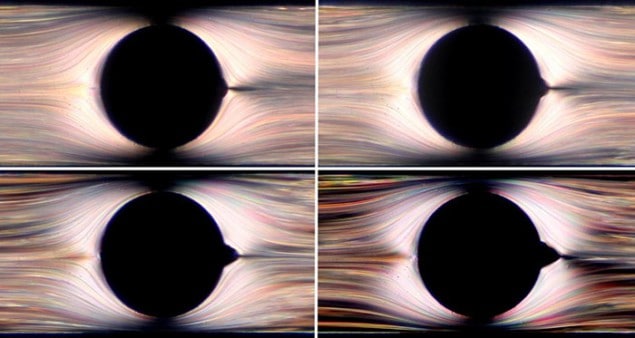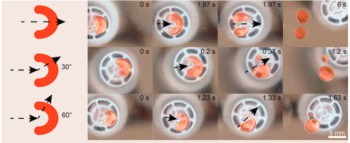
The formation and subsequent collapse of bubbles has been seen for the first time in a flowing liquid crystal. This process is called cavitation and occurs when the pressure drop in a flowing fluid is large enough to allow some of the fluid to vaporize and create a bubble. Cavitation is of great interest in hydrodynamics because the collapsing bubbles can dissipate large amounts of energy in small regions and cause significant damage to machinery such as propellers.
The discovery was made by Tillmann Stieger and colleagues at the Max Planck Institute for Dynamics and Self-Organization in Göttingen, the Technical University of Berlin and the ETH Zürich. Liquid crystals are fluids that are made of rod-like molecules that tend to align under certain conditions. In its experiments, the team pumped liquid-crystal fluids through tiny channels just 0.1 mm wide. The channels contained obstructions, which increase the speed of the flow and encourage cavitation (see image).
Lower energy
The researchers found that cavitation occurs very easily in liquid crystals. This, they say, is because the molecules tend to align themselves in the same direction as they flow along the channel – and this lowers the energy required to create a bubble. Indeed, the team found that it could control the rate of cavitation by controlling the degree to which the molecules lined up.
The discovery could be useful for developing microfluidic systems in which cavitation is used to control the rate at which different fluids mix while flowing through tiny cavities. The research is described in Nature Communications.



